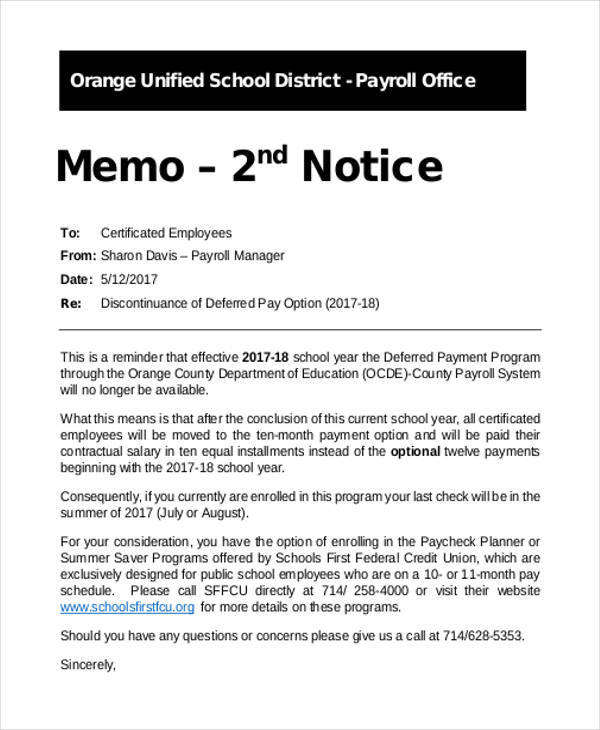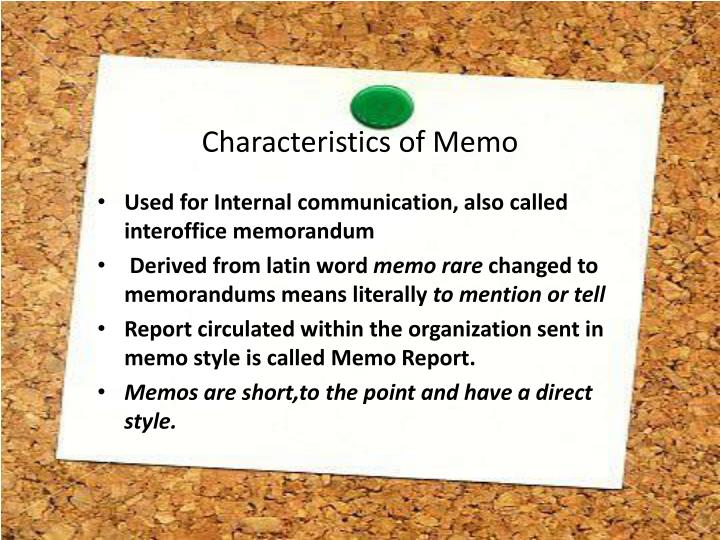

Its objective is to remind the reader of your purpose. Conclusion: The conclusion connects the introductory statement and the key points of the letter to exhibit their relationship.The points must also be crisp and concise without losing their efficacy, relevancy, meaning and/or context. A well-organized letter body ensures that the readers do not miss the important points you wish to convey. This is because readers often skim through the letter to save time. The use of numerical lists or bullet points can make the body more effective.
#Memoranda vs.memorandums series
It may include certain facts, information, a series of questions etc. Body: It is the part of the letter where you describe your concerns or points in detail.A clear and direct opening clarifies the context of the letter and establishes connection. It is the part where the reader decided whether he/she wants to continue reading the letter or not. It is crucial to use an emphatic opening because it is the first thing that readers pay attention to. It may include a captivating expression or catchphrase, an introductory statement about the sender or the topic itself, state the reason for sending the letter. Introduction: This is the opening paragraph of the letter.Salutation: This is a brief sentence to greet the recipient.For example, personal, official, or confidential. Recipient Note: This is the space to notify the recipient of the nature of the letter.However, some types of documents may have a legal requirement to notify the recipient of the mode of delivery. For example, you may have seen certified mail specially mentioned in the letter. Delivery: It indicates the mode of delivery.Reference: This is the part of the letter where you describe the subject or the purpose of the letter.It can be right justified or left justified. It must be placed five lines above the letterhead logo or the page.


A typical letter contains five main sections that include fifteen components in total. Letters are short messages that meant for receivers who are not a part of the organization. Be Objective: Since memos are typically used to state facts or directions, it is crucial to use only objective tone without any indication of partiality.The purpose and concerns must be stated clearly. Use Direct Format: All memos must be direct.Highlight the subject: The subject must be crisp and concise to indicate the purpose transparently.Be Professional: Always use a formal tone to show professionalism.Envision your Audience: Always keep your audience, their role and needs in mind while drafting a memo.Summary: It is the conclusion of the topic, which indicates the desired expectation or required call-to-action.Discussion: It is the detailed section where the major concerns of the topic are stated.Declaration: It is used to proclaim the main point of discussion.Subject Line: It summarizes the purpose of the memo.Date: It indicates the date on which memo is prepared.Header: A header is used to specify the sender and intended recipients of the message.

However, it may sometimes also include persuasive sections that require a call-to-action. A memo is generally used to notify the employees of a specific objective. Back to: Negotiations & Communications The Purpose of a MemoĮvery company has several networks for conveying formal and informal information. It is also used to keep a group updated about upcoming projects, deadlines, events, meetings etc. It saves the managements time by excluding the need of vis-vis interpersonal interactions. It is a mass-communication tool, which is used to convey a specific message to all involved personnel collectively. It includes official policies, methodologies, and other business-related practices.
#Memoranda vs.memorandums update
Update Table of Contents What are Memoranda and Letters? The Purpose of a Memo Memo Format Tips for Making Effective Business Memos Letters Strategies for Writing Effective Letters What are Memoranda and Letters?Ī Memorandum or memo is a form of reminder for an organizations employees.


 0 kommentar(er)
0 kommentar(er)
